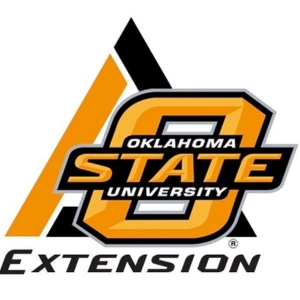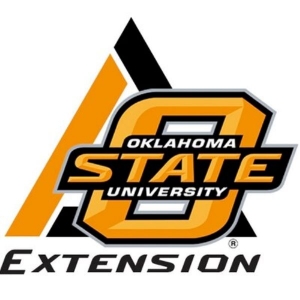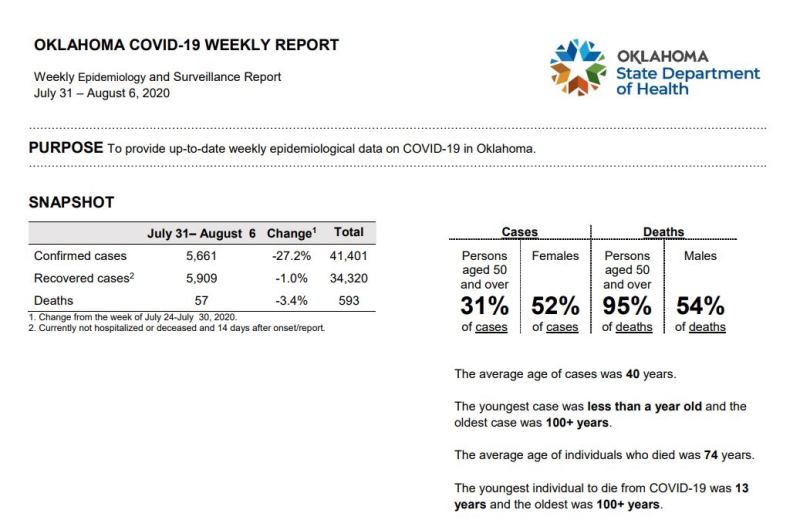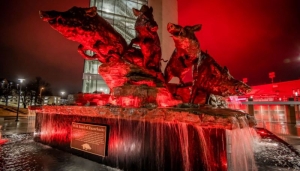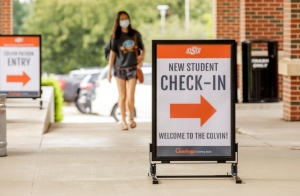Monitor mineral intake closely during summer
OSU Extension Recommendation
Summer often becomes a busy time of year for ranchers (especially during haying season). Making certain that the cows, heifers, and bulls are receiving the minerals that they require is one of the chores that can be easily overlooked. Don't forget to check the mineral feeders or blocks to be certain that they are supplying the minerals that your cattle need. In some cases, medications may be recommended by your veterinarian to be included in the mineral mix. Cow calf operators will want to monitor mineral consumption closely to be certain that the label-recommended amounts are being consumed by the cattle.
A “Veterinary Feed Directive” (VFD) will be necessary for antibiotic feeding in mineral supplements. Contact and work with your local large animal veterinarian about the appropriate VFD for your operation.
Placement of mineral feeders and blocks can aid in achieving optimum mineral intake. Place them in areas where cattle spend a lot of time. Minerals should be placed in loafing areas, near water sources, in shady areas, or any other location that tends be a popular place for the herd to congregate. A rule of thumb is to provide one mineral feeding station for every 30 to 50 cows. Check feeders at least once a week and keep a clean, fresh supply of minerals present at all times. A good feeder should keep minerals dry, be portable and hold up to abuse and corrosion. Open tubs are not adequate in high rainfall areas.
Cattle owners can receive additional help with calculating mineral intake with the “OSU Mineral Calculator” and the “OSU Mineral Consumption Record” sheets. To download these aids go to http://beefextension.com/ and click “Other materials” and then “Calculators”.
Choosing a mineral mix requires understanding of the animal’s requirements and the minerals available in the forages and feedstuffs available to the animals. Mineral needs tend to be area specific and change with soil type, fertilization rates, rainfall and many other factors. Mineral requirements also will depend on animal age and stage of production. An excellent reference source for Oklahoma beef producers about mineral supplementation can be found in the Oklahoma State University Extension Bulletin E-861 “Vitamin and Mineral Nutrition of Grazing Cattle.”
Summer Prescribed Fire
OSU Extension Office Recommendation
As we enter the mid-summer period, it is time to start thinking about prescribed fire again. Most landowners stop burning during April-June either because conditions are not as conducive to burning (frequent rain and wet vegetation) or to minimize impacts to wildlife such as ground nesting birds, deer fawns, rabbits, and reptiles.
July-September is an excellent time to start burning again to help meet multiple land management objectives.
Summer fires are often safer than dormant season fires. This is due to stable weather, light winds, and high water content in the vegetation which slows the rate of fire spread. So, if fire escapes are a concern, consider burning during the summer. Woody plant control can also be effective with summer fires. Slow moving fires have plenty of time to heat up the cambium (inner bark) of trees. This combined with the higher ambient temperatures of summer means that often you can get good top-kill of small trees and shrubs.
Also, while plant response if highly variable between years and locations, we often see an increased desirable forb response following late summer fire as opposed to late winter fires. Therefore, if you have wildlife objectives, burning during the late summer can be effective to increase wildlife food resources. Another reason to burn during mid-summer is to improve forage for livestock. Typically, forage quality on native grass starts to decline in July. By burning at this time, forage quality can be dramatically improved for livestock assuming that adequate moisture is present. Due to the unpredictability of late summer rainfall, hedge your forage and only burn a portion of your land or pastures in case of drought.
Burning during the summer does have some drawbacks. It is often hot and can be uncomfortable and potentially dangerous to the people tending the fire. Be sure to provide plenty of water and have vehicles running with AC to provide a cool shelter. Also, summer fires tend to produce more smoke due to the high levels of water vapor. This should be considered carefully as the smoke can cause safety issues with nearby roads. While summer fires are usually safer, this is not always the case. We sometimes have extended summer droughts when fire danger is high.
Therefore, check on local wildlife risk and potential burn bans.
A good resource for conducting summer prescribed fire is the fact sheet “Burning in the Growing Season” available at https://extension.okstate.edu/fact-sheets/burning-in-the-growing-season.html. Also, be sure to use the OK-FIRE website to help plan your burn https://www.mesonet.org/index.php/okfire/home.
Howe Public Schools Public Release
Howe Public Schools has released their Free and Reduced Meals Eligibility Scales. See below.
ATTACHMENT E
PUBLIC RELEASE – PRICING SCHOOLS
Due to regulations, all school food authorities (SFAs) or institutions must submit annually a public release to the informational media, local unemployment offices, any companies contemplating layoffs in that district's area, grassroots organizations, and interested individuals upon request.
Date submitted to news media: 8/6/20
Name(s) of media outlets and companies submitted to: Oklahoma Welcome/okwnews.com. Howe Public School today announced its policy for free or reduced-price meals for children served under the National School Lunch Program (NSLP), the School Breakfast Program (SBP), and the After-School Snack Program (ASSP).
Local SFA officials have adopted the following household size and income criteria for determining eligibility:
|
Eligibility Scale for Free Meals 130 Percent of Poverty Level |
|||||
|
Household Size |
Income |
||||
|
Annual |
Monthly |
Twice Per Month |
Every Two Weeks |
Weekly |
|
|
1 |
16,588 |
1,383 |
692 |
638 |
319 |
|
2 |
22,412 |
1,868 |
934 |
862 |
431 |
|
3 |
28,236 |
2,353 |
1,177 |
1,086 |
543 |
|
4 |
34,060 |
2,839 |
1,420 |
1,310 |
655 |
|
5 |
39,884 |
3,324 |
1,662 |
1,534 |
767 |
|
6 |
45,708 |
3,809 |
1,905 |
1,758 |
879 |
|
7 |
51,532 |
4,295 |
2,148 |
1,982 |
991 |
|
8 |
57,356 |
4,780 |
2,390 |
2,206 |
1,103 |
|
For each additional family member, add: |
5,824 |
486 |
243 |
224 |
112 |
|
Eligibility Scale for Reduced-Price Meals 185 Percent of Poverty Level |
|||||
|
Household Size |
Income |
||||
|
Annual |
Monthly |
Twice Per Month |
Every Two Weeks |
Weekly |
|
|
1 |
23,606 |
1,968 |
984 |
908 |
454 |
|
2 |
31,984 |
2,658 |
1,329 |
1,227 |
614 |
|
3 |
40,182 |
3,349 |
1,675 |
1,546 |
773 |
|
4 |
48,470 |
4,040 |
2,020 |
1,865 |
933 |
|
5 |
56,758 |
4,730 |
2,365 |
2,183 |
1,092 |
|
6 |
65,046 |
5,421 |
2,711 |
2,502 |
1,251 |
|
7 |
73,334 |
6,112 |
3,056 |
2,821 |
1,411 |
|
8 |
81,622 |
6,802 |
3,401 |
3,140 |
1,570 |
|
For each additional family member, add: |
8,288 |
691 |
346 |
319 |
160 |
Children from households whose income is at or below the levels shown are eligible for free or reduced-price meals. Application forms are being sent to all homes with a letter to parents or guardians. To apply for free or reduced-price meals, households should fill out the application and return it to the school. Additional copies are available at the principal’s office in each school. The information provided on the application is confidential and will be used for the purpose of determining eligibility and may be verified at any time during the school year by school or other program officials. Applications may be submitted at any time during the year.
For SFA officials to determine eligibility, households receiving Supplemental Nutrition Assistance Program (SNAP), Temporary Assistance to Needy Families (TANF), or Food Distribution Program on Indian Reservations (FDPIR) benefits must list the children’s names, a SNAP, TANF, or FDPIR case number; and the signature of an adult household member. All children in households with any household member receiving benefits under assistance programs are eligible for free meals. Children in Other Source Categorically Eligible (i.e., children categorized as homeless, migrant, runaway, Head Start, Even Start, and foster children, if known) are also eligible for free meals. IF YOU DO NOT LIST A SNAP, TANF, OR FDPIR CASE NUMBER, then the application must have the children’s names, total household members, the amount of income each member received last month, the signature of an adult household member, and the last four digits of the adult’s social security number or the mark the box if he or she does not have one.
Foster children also categorically qualify for free meals/milk, regardless of child’s income. If you have foster children living with you and you wish to apply for such meals or milk for them, please complete the application as instructed.
Under the provision of the policy Christie Bennett will review applications and determine eligibility.
Parents or guardians wishing to make a formal appeal may make a request, either orally or in writing, for a hearing to appeal the decision to: Christie Bennett
In accordance with Federal civil rights law and U.S. Department of Agriculture (USDA) civil rights regulations and policies, the USDA, its Agencies, offices, and employees, and institutions participating in or administering USDA programs are prohibited from discriminating based on race, color, national origin, sex, disability, age, or reprisal or retaliation for prior civil rights activity in any program or activity conducted or funded by USDA. The school’s policy statement contains an outline of the hearing procedure.
Persons with disabilities who require alternative means of communication for program information (e.g. Braille, large print, audiotape, American Sign Language, etc.), should contact the Agency (State or local) where they applied for benefits. Individuals who are deaf, hard of hearing or have speech disabilities may contact USDA through the Federal Relay Service at (800) 877-8339. Additionally, program information may be made available in languages other than English.
To file a program complaint of discrimination, complete the USDA Program Discrimination Complaint Form, (AD-3027) found online at: http://www.ascr.usda.gov/complaint_filing_cust.html, and at any USDA office, or write a letter addressed to USDA and provide in the letter all of the information requested in the form. To request a copy of the complaint form, call (866) 632-9992. Submit your completed form or letter to USDA by:
(1) mail: U.S. Department of Agriculture
Office of the Assistant Secretary for Civil Rights 1400 Independence Avenue, SW
Washington, D.C. 20250-9410;
(2) fax: (202) 690-7442; or
(3) email: program.intake@usda.gov.
This institution is an equal opportunity provider.
Each school and the office of the Howe Public Schools has a copy of the policy which may be reviewed by any interested party.
Oklahoma COVID-19 Weekly Report August 7, 2020
OSDH Update
Click the link for today's weekly Oklahoma COVID-19 Weekly Report.
Oklahoma’s current trend with new positive cases continues to reflect community transmission, which can be reduced by keeping 6 feet of physical distance from others, wearing face coverings when around individuals from outside the household, avoiding touching your face, and regular hand-washing.
Oklahoma currently ranks 32nd in the number of total reported COVID-19 cases in the U.S. and 28th in the cumulative incidence (per 100,000 persons) of reported COVID-19 cases in the U.S.
It is critical for Oklahomans to seek out testing, with or without symptoms. Diagnostic testing is freely available to all Oklahomans, and we continue to improve our ability to find and diagnose COVID-19 cases through our contact tracing efforts. If you are diagnosed with COVID-19, a public health worker may try to contact you; the need to adhere to instructions to quarantine and isolate remain critically important.
Reports from weeks past can be found here.
For more information, visit coronavirus.health.ok.gov.
OSDH Weekly Epidemiology Report
Weekly Epi Report August 7, 2020
Positive tests as a percent of total tests.
Arkansas Adds No. 8 Florida And No. 4 Georgia to 2020 Schedule
FAYETTEVILLE, Ark. – Arkansas has added No. 8 Florida and No. 4 Georgia to the Razorbacks’ 2020 schedule that will feature 10 games against Southeastern Conference teams only.
The Razorbacks will travel to Gainesville for the first time since 2013 while the Bulldogs will make the trip to Fayetteville for the first time since 2009. With the addition of Florida and Georgia to the schedule, Arkansas’ schedule now has all six SEC teams ranked in the preseason Coaches’ Poll – including No. 3 Alabama, No. 5 LSU, No. 11 Auburn and No. 13 Texas A&M. The Razorbacks’ schedule is the only one among announced Power 5 schedules that has six preseason ranked teams.
“We’re excited to play this schedule,” Head Coach Sam Pittman said. “The SEC is the best and that’s where Arkansas belongs, with the best. We’ve got an incredible opportunity ahead of us as a program. Our staff can’t wait to get on the field with our team and prepare to take on the toughest schedule in the country.”
The Razorbacks will play the eight SEC schools that were on the Hogs’ original 2020 slate. Arkansas is set to host defending national champion and No. 5 LSU, No. 3 Alabama, Ole Miss and Tennessee inside Donald W. Reynolds Razorback Stadium in Fayetteville. The Razorbacks will play No. 11 Auburn, Mississippi State, Missouri and No. 13 Texas A&M all outside of the state of Arkansas.
“We already owned the nation’s strongest 2020 football schedule and with these additions to our SEC only schedule, we now own the most challenging schedule in the history of college football,” Vice Chancellor and Director of Athletics Hunter Yurachek said. “As Razorbacks, we have never backed down from a challenge, this year will be no different. Our focus remains on the growth of our program and supporting Coach Sam Pittman and our football student-athletes as they embrace this extraordinary opportunity.”
Dates for all SEC games will be announced by the conference at a later date.
Ticket and game day information will be available for Arkansas season ticket holders in the near future.
Lowe Announces Coalition of Community Leaders to Help Oklahomans Facing Eviction
OKLAHOMA CITY – State Rep. Jason Lowe, D-Oklahoma City, today addressed the looming spike in evictions throughout the state and announced a coalition of community leaders that will be providing support to those facing eviction.
“Thousands of Oklahomans, devastated by job loss and decreased income due to COVID-19, are facing eviction next month now that the federal eviction moratorium has expired,” Lowe said. “It is imperative that the public knows their rights as tenants, as well as the community services available to them in order to prevent a homelessness crisis.”
Lowe was joined by several community members representing organizations with resources to help Oklahomans facing evictions.
“Tulsa and Oklahoma City are Top 20 nationally for eviction rates and that was before COVID,” said Michael Figgins, the executive director of Legal Aid Services of Oklahoma. “When you add illegal lockout evictions, studies are showing that we are looking at more than 130,000 potential evictions.”
The resources available by the providers present ranged from legal representation, back rent, to occupational retraining videos.
“We have eviction attorneys at the courthouse every time there is an eviction docket,” said Jennifer Montagna, the lead eviction attorney at Legal Aid Services of Oklahoma. “If you are facing eviction and you receive a summons or prior to the court action a notice regarding being late on your rent, you should call Legal Aid immediately.”
While the purpose of the press conference was to bring attention to the upcoming eviction crisis Oklahoma faces, Lowe did offer some direct legal advice.
“No matter what, the thing you cannot do if you get an eviction notice is ignore it,” Lowe said. “As an attorney, I see people in courthouses every day that are scared and feel hopeless because there is nobody there advocating for them. We want everyone to know that you don’t have to face eviction alone. The people here today and more importantly the organizations behind them are here to help and be your advocate.”
Speaking at the conference today: Michael Figgins - Executive Director of Legal Aid Services of Oklahoma, Jennifer Montagna - Lead Eviction Attorney at Legal Aid Services of Oklahoma, Ginny Carl – Executive Director of Community Cares Partners and Founder and CEO of Giving Well LLC, Brian Wilkerson – Director of Litigation and Legal Services at Oklahoma Disability Law Center, Inc., Marilyn Long – Founder and Executive Director at North East Resource Center, Inc.
OSDH Expands Contact Tracing Efforts with Call Center in Oklahoma City
OSDH Press Release
OKLAHOMA CITY (Aug. 7, 2020) – The Oklahoma State Department of Health (OSDH) announced today it is expanding ongoing contact tracing efforts in Oklahoma with the launch of a new COVID-19 contact tracing and case investigation call center.
The purpose of contact tracing is to assess the known active COVID-19 cases and quickly get in touch with exposed individuals to ask that they quarantine and to schedule them to be tested.
“The COVID-19 pandemic is not showing signs of slowing down, and the vaccine is still in a testing phase. Contact tracing is a proven way to mitigate the spread of a contagious disease and help get it under control,” said Interim Health Commissioner Lance Frye, M.D. “The successful launch of this call center is a major win in Oklahoma’s battle against this novel coronavirus. The work done here is mission critical for the long-term health and safety of all Oklahomans.”
The call center has been operational since June 8 with more than 400 staff professionally trained in contact tracing and case investigation working active COVID-19 cases in Oklahoma, a cost covered by federal aid through the CARES Act.
Call center staff are responsible for the investigation of COVID-19 with responsibilities that include: direct client interviews, delivering guidance on testing, quarantine, and home isolation, disease control intervention and education activities, and documenting key information for studying and understanding the local epidemic.
"The Oklahoma State Department of Health has built a talented team of Oklahomans to serve on the frontlines and to help us respond to the unprecedented demands of the COVID-19 pandemic,” said Amanda James, Internal Partnerships Manager and Contact Tracing Center Project Manager for OSDH. “As this effort continues, we will continue to modernize our methods to conduct contact tracing, to include our latest effort to allow for text-based communications to notify Oklahomans of their potential exposure to COVID-19 and to maintain contact throughout their quarantine period.”
Currently, call center case investigators can work up to 400 active COVID-19 cases per day in total, depending on the need for support by the local county health departments. In addition to this call center, OSDH also has approximately 150 additional employees (full-time and temporary) engaged in contact tracing and case investigation at the local county health departments. This figure does not include Oklahoma City-County or Tulsa Health Departments who each manage their own contact tracing teams.
For more information on contact tracing, please visit the coronavirus.health.ok.gov COVID-19 dashboard.
Bipartisan Bill Tears Down Health Data Barrier for Native Americans
Press Release
Washington, D.C. – Energy and Commerce Committee members Rep. Greg Gianforte (R-MT), Consumer Protection and Commerce Subcommittee Republican Leader Cathy McMorris Rodgers (R-WA), Rep. Markwayne Mullin (R-OK), Rep. Ben Ray Luján (D-NM), Rep. Tom O’Halleran (D-AZ), and Rep. Raul Ruiz, M.D. (D-CA) released the following statement on H.R. 7948, the Tribal Health Data Improvement Act of 2020, a bill that would reaffirm that Tribal public health authorities are entitled to access public health data.
“Native American Tribes face structural challenges accessing federal public health data that state and local governments can access—data they are entitled to by law. This needs to change. Our bipartisan bill tears down this information barrier so Tribal communities can utilize federal data to help guide their public health decision-making, something that is critically important during the COVID-19 pandemic. We know that Native Americans are being impacted by this pandemic disproportionately. As we continue our work to reduce disparities in health outcomes, access to public health data will help close the gap,” said Gianforte, Rodgers, Mullin, Luján, O’Halleran and Ruiz.
The National Indian Health Board CEO, Stacy A. Bohlen, expressed support for this bill.
“The National Indian Health Board strongly supports the Tribal Health Data Improvement Act. Tribal Nations, as sovereign governments, are inherent public health authorities providing vital public health programs and services to their citizens and communities. By statute, Tribal Epidemiology Centers (TECs) are also public health authorities, and play a critical role in assisting Tribal governments and Tribal organizations in public health activities. Yet for years, both Tribes and TECs have faced immense challenges in accessing federal and state health data systems necessary to engage in foundational public health work. NIHB applauds Representatives Gianforte and Luján for leading the Tribal Health Data Improvement Act. This bill will help ensure Tribes and TECs have direct access to federal healthcare and public health surveillance systems, and require the Centers for Disease Control and Prevention (CDC) to work directly with Tribes to address widespread misclassification and undersampling of American Indians and Alaska Natives on birth and death records, and in public health surveillance systems,” said Bohlen.
OSU safety measures in place for student move-in day
(STILLWATER, Oklahoma, Aug. 7, 2020)
With detailed safety precautions in place, Oklahoma State University students began the move-in process Friday.
The process looked different for returning campus residents. For incoming freshmen, the scene represented the new “normal.” Despite the challenges, Director of Housing and Residential Life Dr. Leon McClinton said the university was well prepared to welcome students back to campus.
OSU’s plan limits the number of students who can move in at one time to 850 total students across 31 residence halls. It also requires students and staff to wear a mask any time they are in a public area or outside of their assigned living unit. Students were provided a mask upon check-in.
All on-campus residents are required to complete a COVID-19 test prior to checking in to campus housing, and free testing was provided by University Health Services (UHS) via stations at designated check-in sites capable of processing 30 tests per hour. Students were encouraged to isolate themselves until receiving their test results and all on-campus residents were required to submit those results to UHS.
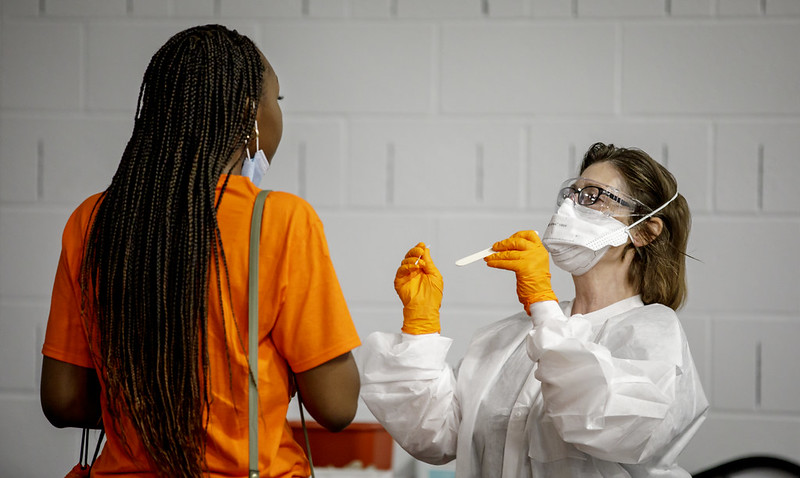
McClinton called Friday a good start to an ongoing process to get students settled in safely.
“We have spent over three months preparing for this semester,” he said. “We know that it’s an unprecedented time.
“We are designed and wired to bring students together and help them meet people and connect. Entering this year, it feels a bit foreign to us because now we’re trying to discourage large gatherings. … It’s really unfortunate that we have to do these things, but our number one priority is keeping our students safe, so we’re doing everything we can to try to minimize the spread of this disease.”
The university has installed social distancing markers, plexiglass shields on desks, centrally located hand sanitizer stations in the halls, designated entrance and exit doors, designated up- and down-stairwells and installed new air filters in air handling units. Additional signage reminds everyone to wear a mask, wash their hands and socially distance.
All residential and community spaces were disinfected and sanitized using hospital grade disinfectant prior to move-in. OSU has doubled the frequency of community bathroom cleanings during the week, added weekend cleanings,andreduced seating occupancy in lounges and public spaces that may entice students to act against the interest of their own health and that of the university community.
OSU is also engaged in a vigorous campaign to educate students on steps they can take to protect themselves and others. Part of that campaign is the Cowboy Promise to Protect, a pledge affirming the shared responsibility of everyone in the Cowboy family to safeguard the health of the entire campus community.
McClinton said move-in is an exciting time for students and the university is eager to welcome them to campus. At the same time, he said safety has to be the focus.
“The pandemic toll on our campus is going to be heavily influenced by how our students conduct themselves on a daily basis,” he said. “We’re hoping that we can educate and help our students understand the importance of wearing facial coverings at all times in public settings, washing their hands often and then also maintaining adequate distancing between themselves and others.
“We added language to our housing contract this summer in regard to COVID-19 and behaviors we expect and how students need to wear masks when they’re in public settings within our residential communities. If there are habitual offenders who do not want to comply on a consistent basis, we have the authority to remove them from housing. We’re taking this very seriously.”
Oklahoma State University is a modern land-grant university that prepares students for success. OSU has more than 34,000 students across its five-campus system and more than 24,000 on its combined Stillwater and Tulsa campuses, with students from all 50 states and around 100 nations. Established in 1890, OSU has graduated more than 275,000 students to serve the state of Oklahoma, the nation and the world.
Richard Harrison Obituary
Funeral Services for Richard Harrison, 66 of Spiro, Oklahoma will be 1:00 pm Saturday, August 8, 2020 at the Mallory-Martin Funeral Home Chapel. Viewing will be Friday from 9:00 am-8:00pm, with the wake service from 6:00-8:00pm at the Funeral Home.
Richard Dick Harrison was born on August 23, 1953 in Fort Smith, Arkansas to Dick and Carrie (Harrison) Harrison and passed away on August 3, 2020 in Spiro, Oklahoma. He is survived by his wife, Linda Harrison; two daughters, Crystal Harrison, and Carrie Cooley; son, Richard Joseph Harrison; four grandchildren, Delilah, Faith, Mark, and Joann Belle; sister, Rose Boswell; and other family members, friends, and loved ones.
He was preceded in death by his parents, Dick and Carrie Harrison; his sister, Myrtle Harrison; two brothers, Johnny Harrison and Barney Harrison. Richard enjoyed shooting pool, going to the casino, drawing, and spending time with his family.
Please visit our website at www.mallorymartinfuneralhome.com to sign Richard’s online guest book.


